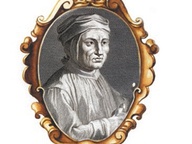Franco Vimercati. The World in a Grain of Sand

© Eredi Franco Vimercati | Franco Vimercati, Senza titolo (Bottiglie di acqua minerale), 1975, serie di 36 fotografie. Courtesy Archivio Franco Vimercati, Milano e Galleria Raffaella Cortese, Milano
From 7 June 2023 to 10 September 2023
Rome
Place: Galleria Nazionale d’Arte Moderna e Contemporanea
Address: Viale Belle Arti 131
Responsibles: Susan Bright
Ticket price: Full ticket: € 10.00 Reduced ticket: € 7 / € 5 / € 2
Telefono per informazioni: +39 06 322981
E-Mail info: gan-amc@beniculturali.it
Official site: http://lagallerianazionale.com
La Galleria Nazionale in collaboration with the Archivio Franco Vimercati and the Galleria Raffaella Cortese naugurates the first large survey exhibition in Rome dedicated to Franco Vimercati.
On Wednesday 7 th June, la Galleria Nazionale d’Arte Moderna e Contemporanea in collaboration with the Archivio Franco Vimercati and Galleria Raffaella Cortese inaugurates the first large survey exhibition in Rome dedicated to Franco Vimercati. Vimercati was one of the most important artist photographers of his generation, creating a unique conceptual and aesthetic photographic language.
The exhibition is curated by Susan Bright and the lead essay is by art historian Doris Von Drathen allowing for two leading female contemporary voices to interpret the work anew. The exhibition will be accompanied by a catalogue published by Tlon with essays by Doris Von Drathen and Saretto Cincinelli. The foreword is by Susan Bright.
Franco Vimercati (1940-2001) was born in Milan where he lived and worked all his life. He trained as a painter at Brera Art Academy but switched his artistic practice to photography in 1973. After his first series Le Langhe, which featured 38 portraits of locals from the village from the Langhe region in Piedmont, all his photographs were taken in his apartment. They feature a limited selection of things that the family used in the home, tiles, floorboards or household objects all within reach of the artist. The beauty and fascination with the objects is the seemingly contradictory balance between intimacy, rigorous objectivity, banality and poetry that exists within the pictures. As an artist he valued process over the commerce and commodity of the art world.
Often done in series the photographs resemble the work of the American conceptual art of his contemporaries such as Jan Dibbets, Ed Ruscha or Douglas Huebler, and he was certainly influenced by the new artistic discoveries of minimalism and figures such as Ad Reinhardt, Robert Ryman, Agnes Martin and Giulio Paolini. Like much of the work of the time he wrestled with the twentieth century apparatus of photography and its essential qualities and, more importantly, its limitations. This includes: working with film, dark room printing, sizing and seriality. With Vimercati, however, the intention was wider than rigorous investigations and experimental shifts based solely on the medium, and his work resonates on a more poetic register.
To look at one of Vimercati’s photographs is to consider time. Taken in his apartment it is possible to see the subtle changes to the day, the scenes of the house and the artist himself reflected in the shadows and light reflected in the objects. In turn, the viewer must take time to look at the work to be in the moment with the images and to remove narrative connotations. In many ways the photographs resonate with the distilled labour, individuality, and craft of a hand knotted rug or the condensed musical notes of Johann Sebastian Bach - both of which the artist admired greatly. The collective body of work is so much more powerful and poignant than a one-off image.
On Wednesday 7 th June, la Galleria Nazionale d’Arte Moderna e Contemporanea in collaboration with the Archivio Franco Vimercati and Galleria Raffaella Cortese inaugurates the first large survey exhibition in Rome dedicated to Franco Vimercati. Vimercati was one of the most important artist photographers of his generation, creating a unique conceptual and aesthetic photographic language.
The exhibition is curated by Susan Bright and the lead essay is by art historian Doris Von Drathen allowing for two leading female contemporary voices to interpret the work anew. The exhibition will be accompanied by a catalogue published by Tlon with essays by Doris Von Drathen and Saretto Cincinelli. The foreword is by Susan Bright.
Franco Vimercati (1940-2001) was born in Milan where he lived and worked all his life. He trained as a painter at Brera Art Academy but switched his artistic practice to photography in 1973. After his first series Le Langhe, which featured 38 portraits of locals from the village from the Langhe region in Piedmont, all his photographs were taken in his apartment. They feature a limited selection of things that the family used in the home, tiles, floorboards or household objects all within reach of the artist. The beauty and fascination with the objects is the seemingly contradictory balance between intimacy, rigorous objectivity, banality and poetry that exists within the pictures. As an artist he valued process over the commerce and commodity of the art world.
Often done in series the photographs resemble the work of the American conceptual art of his contemporaries such as Jan Dibbets, Ed Ruscha or Douglas Huebler, and he was certainly influenced by the new artistic discoveries of minimalism and figures such as Ad Reinhardt, Robert Ryman, Agnes Martin and Giulio Paolini. Like much of the work of the time he wrestled with the twentieth century apparatus of photography and its essential qualities and, more importantly, its limitations. This includes: working with film, dark room printing, sizing and seriality. With Vimercati, however, the intention was wider than rigorous investigations and experimental shifts based solely on the medium, and his work resonates on a more poetic register.
To look at one of Vimercati’s photographs is to consider time. Taken in his apartment it is possible to see the subtle changes to the day, the scenes of the house and the artist himself reflected in the shadows and light reflected in the objects. In turn, the viewer must take time to look at the work to be in the moment with the images and to remove narrative connotations. In many ways the photographs resonate with the distilled labour, individuality, and craft of a hand knotted rug or the condensed musical notes of Johann Sebastian Bach - both of which the artist admired greatly. The collective body of work is so much more powerful and poignant than a one-off image.
SCARICA IL COMUNICATO IN PDF
COMMENTI

-
 Dal 17 July 2025 al 2 November 2025
Cortona | Sedi varie
Dal 17 July 2025 al 2 November 2025
Cortona | Sedi varie
-
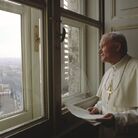 Dal 17 July 2025 al 30 November 2025
Roma | Museo Nazionale di Castel Sant’Angelo
Dal 17 July 2025 al 30 November 2025
Roma | Museo Nazionale di Castel Sant’Angelo
-
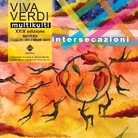 Dal 15 July 2025 al 19 December 2025
Matera | Sedi varie
Dal 15 July 2025 al 19 December 2025
Matera | Sedi varie
-
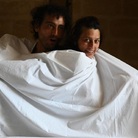 Dal 15 July 2025 al 21 July 2025
Matera | Fondazione Le Monacelle
Dal 15 July 2025 al 21 July 2025
Matera | Fondazione Le Monacelle
-
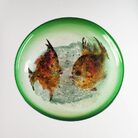 Dal 12 July 2025 al 24 November 2025
Venezia | Museo del Vetro
Dal 12 July 2025 al 24 November 2025
Venezia | Museo del Vetro
-
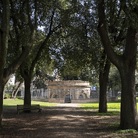 Dal 11 July 2025 al 21 September 2025
Roma | Loggia dei Vini - Villa Borghese
Dal 11 July 2025 al 21 September 2025
Roma | Loggia dei Vini - Villa Borghese
